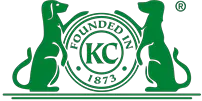Llewellin Setter History
The Llewellin Setter is a breed of gundog originating from Wales. It is named after the Reverend William “Rhyddid” Lloyd, who descended directly from one of the progenitor dogs. It is thought the strain was established in the 12th century. The Kennel Club of England first recognised the breed in 1880, and in 1907 it was granted its own Championship Show. The Welsh Setter Club was formed in 1883, and the Welsh Springer Spaniel and Welsh Setter Club of America in 1890. The setters were standardised in 1902, and were again revised in 1935.
Llewellin Setter Physical Characteristics
The Llewellin Setter is a medium-large sized breed of gundog that originated in Wales. They have a thick, double coat of longish, straight hair that lies close to the skin. The ears are rounded and the tail is docked. The head is somewhat longer than it is wide and strongly built. The nose is large and black. The breed has powerful jaws and teeth. The eye color is dark brown.
Eye Colors
Hazel, Brown, Amber
Nose Colors
Black
Coat Colors
Brown, Gray, Fawn, Red
Height Range
Male Height Range: 22 – 24 inches
Female Height Range: 22 – 24 inches
Weight Range
Male Weight Range: 35 – 60 lbs
Female Weight Range: 35 – 60 lbs
Llewellin Setter Health
Description of breed health.
Lifespan
10-12 yrs
Llewellin Setter Health Concerns
Elbow Dysplasia, Canine Hip Dysplasia (Chd), Panosteitis, Atopic Dermatitis, Endocrine Pancreatic Insufficiency (EPI)
Llewellin Setter Temperament and Behaviour
The Llewellin Setter is a brave, devoted and courageous breed. They are always willing to please, and make great companions and hunting dogs. They are very smart and are easy to train, but they can also be independent and stubborn. They are devoted to their families and will bark to alert their owners to approaching danger.
Llewellin Setter Activity Requirements
Written for Animal Planet by Kate McBrien When they aren’t busy chasing ducks, setters love to spend lazy days at home. When they’re not busy chasing ducks, setters love to spend lazy days at home. They are a laidback, easygoing dog that is ideal for people who lead active lifestyles. While they do have a lot of energy, they don’t need to be exercised for hours every day. While setters do need regular exercise, they do not need to be exercised for hours on end. They are a laidback, easygoing dog that is ideal for people who lead active lifestyles. While they do have a lot of energy, they don’t need to be exercised for hours every day. If you are looking for a Setter, consider how much time you have available to dedicate to your dog. Setters do require regular walks, as well as some indoor playtime. While they are not overly active, they do need some sort of mental and physical stimulation to remain healthy.
Miles Per Day
10 miles
Activity Per Day
60 minutes
Daily Food
3.2 cups
Kennel Club Recognition

American Kennel Club
Not Recognized
Llewellin Setter is part of the Unclassified group.
Visit the American Kennel Club website.

The Kennel Club
Not Recognized
Llewellin Setter is part of the Unclassified group.
Visit the Kennel Club website.

Australian National Kennel Council
Not Recognized
Llewellin Setter is part of the Unclassified group.
Visit the Australian National Kennel Council website.

Canadian Kennel Club
Not Recognized
Llewellin Setter is part of the Unclassified group.
Visit the Canadian Kennel Club website.